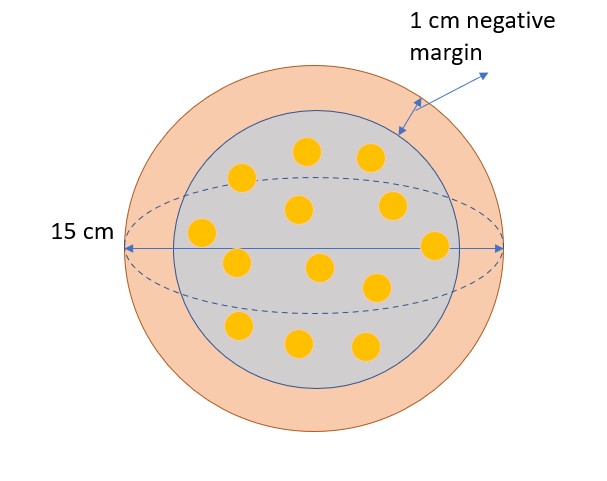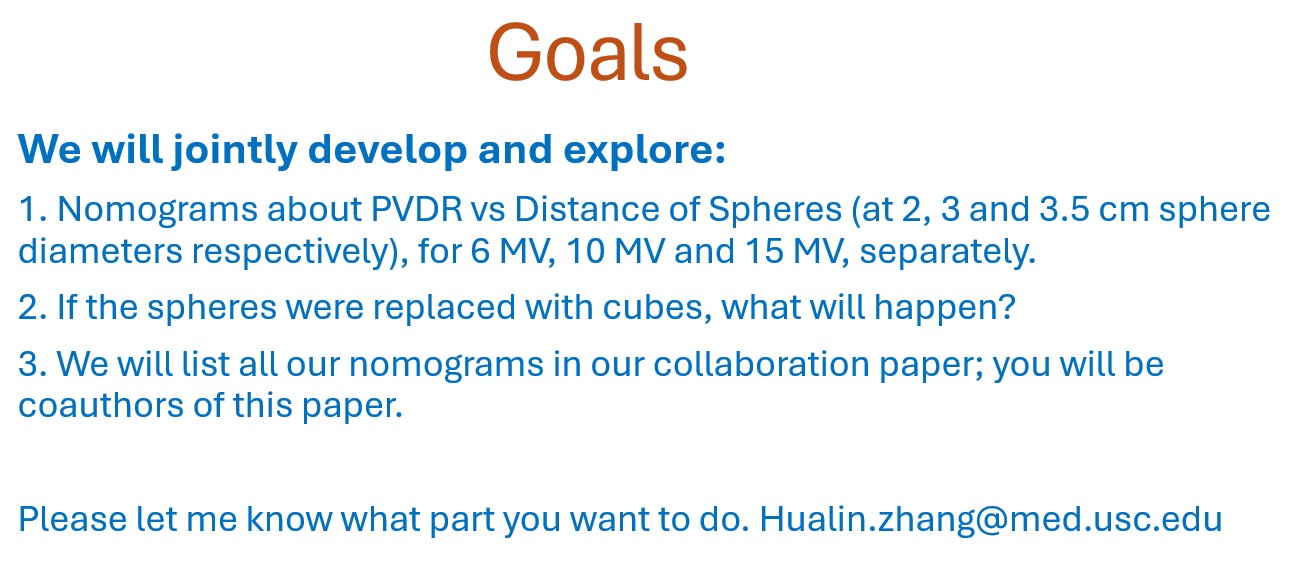
Dear Professor Zhang,
I am Dai Zhitao, a physicist from Shenzhen Hospital of the Chinese Academy of Medical Sciences' Cancer Institute. Our center has been conducting SFRT treatment for a year. I sincerely hope to join your collaborative project, but I am not sure if it's a bit late.
If you want to collaborate with our SFRT team, please make your Lattice plans and contact us (Arthur, Salim, ZhengZheng, or Hualin). We will summarize and write a paper with all collaborators about how many different dosimetry approaches can be used in SFRT Lattice planning. We plan to give some recommendations on approaches and dose constraints for Lattice therapy.
Dear Professor Zhang, I have a question about whether the spherical target should be placed in a geometric body, as the position of the tumor has a significant impact on the dose distribution, or if we could create a virtual CT phantom with a contour to ensure the comparability of everyone's plans.
This is a good question, but it is hard to answer. For clinical trial, we want our plans to be consistent, that means you need to place spheres as consistent as possible (sphere size, sphere to sphere distance, margin to the boarder), density of sphere (number of spheres per 100 cc) should be consistent, the density of spheres should be same to all patients. If you have software, you can easily control consistency. Manually contouring spheres will be hard to keep consistent, of course if you spend enough time, you can achieve consistency manually too. However, some MDs argued that different patients and tumor sites should use different lattice arrangements for a personalized care. This is also a good point. But, if you have too many variables, you cannot get conclusions why different response rates were found. Whatever you are doing, you need to accumulate some consistent plans' responses, then we can possibly get what settings are better for certain clinical situations. This is a reason why every clinical trial wants to be designed for a possibly consistent response, asked to have strict criteria in the trial.
Sure. You can join us. We are trying to establish some guidelines or empirical equations about relationship between the sizes of vertices (small spheres) and sphere-to-sphere distance in VMAT planning setting, plus adding whole target volume size dependence, with a condition of PVDR (D10/D90) at least 2.5, check at every step (vertices' size and distance), how many spheres can be arranged. Some dosimetrists are working on it, but the progress is slow, because they are too busy in clinic. We may not be able to complete all tests by the end of year.


2nd test case, an ellipsoid target, 20 cm in major and 16 cm in minor axis.